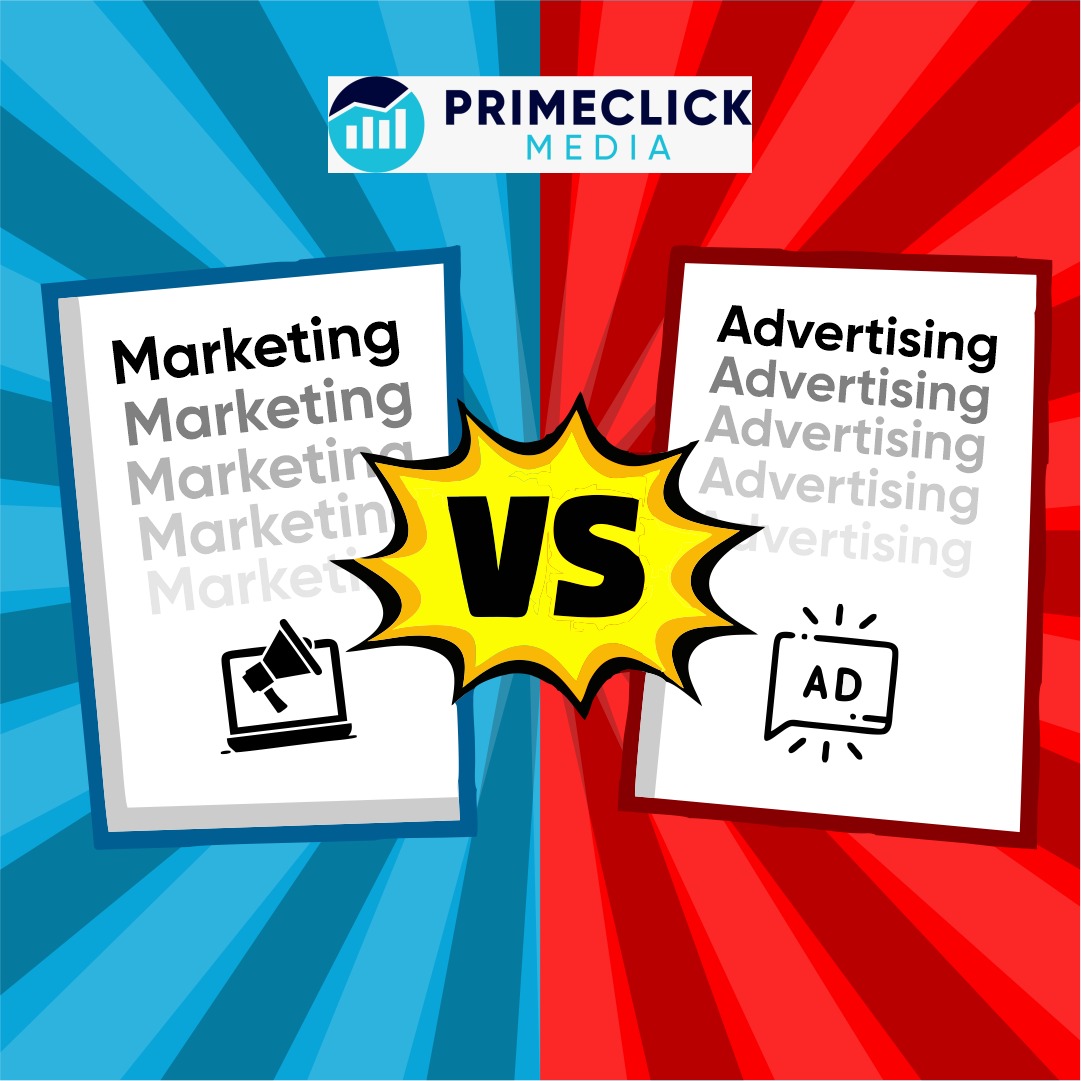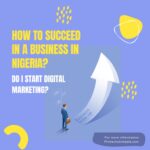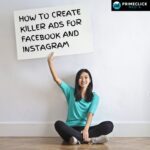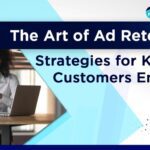Explore the dynamic realm of business, and you’ll encounter two prominent terms: “Marketing” and “Advertising.” Although people often use them interchangeably, these terms possess their impact, providing distinct paths to enhance business expansion. But here’s the valuable insight: when combined effectively, they have the potential to elevate your campaigns to new heights.
So, instead of choosing between the two, why not excel in the art of seamlessly integrating both? In this guide, we will unravel the unique characteristics of each and demonstrate how merging their strengths can result in influential campaigns that genuinely connect with your audience.
What is Marketing?
Marketing includes the promotion and sale of goods or services. It covers a wide spectrum, including research, product development, and the creation of strategies to engage potential customers. Essentially, marketing forms the foundation for a brand’s connection with its audience.
Before delving further, it’s crucial to address a common source of confusion: branding vs. marketing. Although closely related, these are separate components that every business should distinguish. Branding establishes your identity, while marketing focuses on communicating that identity to the world.
Types of Marketing
Within the realm of marketing, various avenues exist, with some of the most notable types being:
Content Marketing
A content marketing strategy involves crafting and distributing valuable content customized to draw in and convert potential customers. This content should directly relate to the brand’s target audience and their requirements, encompassing various formats such as blogs, videos, infographics, and podcasts. The objective? Deliver consistent value and nurture enduring relationships.
Content marketing not only enhances online brand recognition and SEO rankings but also positions you as an industry authority. By providing valuable insights through your content, you cultivate trust and create a dedicated community around your brand.
Social Media Marketing
A digital strategy employs platforms such as Facebook, Twitter, Instagram, LinkedIn, TikTok, and others to disseminate company updates, pertinent industry information, and enjoyable interactions related to products or services. It extends beyond merely posting updates and involves actively interacting with followers, sharing industry updates, and shaping the brand’s identity. Social media marketing facilitates instant engagement with your audience, encourages direct feedback, and strengthens brand loyalty. When you create the right content, you have the potential to transform followers into enthusiastic brand advocates.
Email Marketing
While one of the oldest digital strategies, email marketing remains highly effective. In our recent marketing survey, 16.2% of marketers found it to be the most profitable. This strategy entails sending emails to both potential and existing customers to inform, engage, and boost sales. When you tailor content and segment your audience appropriately, emails can yield a substantial return on investment.
Email marketing provides a direct route to your audience’s inbox, ensuring personalized and segmented content reaches them. Its cost-effectiveness and ability to encourage repeated engagements make it a valuable tool in your marketing arsenal.
Influencer Marketing
Leveraging the social media followers of influencers to endorse products or services is known as influencer marketing. Thanks to their authenticity and wide reach, these influencers can influence their audience’s buying choices, making them influential brand advocates.
Influencer marketing harnesses the trust that influencers have established with their audience. An endorsement from the right individual can rapidly enhance your brand’s credibility.
Affiliate Marketing
In a results-driven strategy, businesses motivate their partners (affiliates) by rewarding them for guiding traffic or generating sales through their promotional efforts. This frequently entails using distinctive links or promotional codes.
Affiliate marketing proves cost-effective since you solely pay for real sales or leads. It extends your brand’s outreach and harnesses the marketing endeavors of others to achieve tangible outcomes.
Paid, Owned, and Earned Media
Paid Media: Paid media encompasses any type of media or content placement for which you make direct payments. This encompasses:
- Pay-per-click (PPC) ads on search engines.
- Display advertisements on websites.
- Sponsored posts on social media.
- Collaborations with influencers, involving payment for promoting your products or services.
- Listings or promotions on other e-commerce websites or directories.
Paid media grants you precise control over the positioning, timeframe, and visibility of your promotional content. Essentially, it involves “renting” space on a platform to reach your intended audience.
Owned Media: This category includes any online platform that you own and have control over the content, such as your website, social media profiles, or email newsletters. While it is cost-effective in the long term and grants you full control, gaining substantial traction can be a gradual process.
Earned Media: This is where genuine recognition shines! It’s essentially the online equivalent of word-of-mouth marketing. Earned media might come in the form of a social media share, a mention in a blog post, or a product review. It provides free exposure but isn’t directly managed by you, making it both exciting and unpredictable.
Now that you have a grasp of the various facets of marketing, let’s explore advertising in the same manner.
What is Advertising?
Starting right away, advertising is the component of marketing that directly promotes a product, service, or brand. Picture it as the megaphone – the eye-catching billboards, commercials, or digital advertisements that are designed to capture your attention and convince you.
Types of Advertising
Much like marketing, advertising also branches out into various types, each offering distinct advantages tailored to specific audiences and goals.
Digital Ads (PPC, Display, and Video)
These are not just ordinary advertisements; they are your online champions competing for attention in a crowded digital arena.
PPC (pay-per-click): Think of Google. Even smaller businesses, such as local restaurants, utilize PPC to secure top placements in search results, ensuring that hungry locals find them first. The advantage? You only pay when there is genuine interest.
Display ads: Elevate brand visibility by using visually captivating graphics on third-party websites. Remember seeing a Nike shoe advertisement while reading an article? That’s display advertising working its magic, strengthening brand presence with every scroll.
Video ads: Capture viewers’ attention with compelling storytelling, often leading to higher viewer retention and conversion rates. Brands like Apple don’t just advertise; they weave narratives. Video enables the creation of captivating stories that leave lasting impressions on viewers.
Traditional Media (TV, Radio, Print)
The classics! TV ads are commercials shown to viewers, radio ads target listeners, and print covers various formats, including magazines, newspapers, and brochures.
TV ads: Almost everyone watches TV, so it’s an opportunity to capture a vast audience. Create ads that resonate with viewers. Remember Coca-Cola’s heartwarming holiday commercials? That’s an example of TV advertising that had an entire generation humming along.
Radio ads: Many people enjoy music while driving, making it a prime opportunity to insert your catchy radio ad into their thoughts. Whether it’s the humor in Geico’s ads or Spotify’s latest offers, a well-crafted radio ad can leave a lasting impression.
Print: Physical, tangible, and timeless. There’s something special about flipping through a magazine and coming across a glossy advertisement. Embrace that appeal. Think of Vogue, with a glossy Rolex ad nestled among engaging content. It’s the epitome of tactile branding.
Out-of-home Advertising (Billboards, Transit Ads)
These are advertisements that reach consumers when they are outside their homes. Billboards are sizable outdoor structures typically located in high-traffic areas, while transit ads can be found on buses, subways, and taxi cabs.
Billboards: Think big. Capture attention on highways. You have a vast canvas to convey your brand’s story. Calvin Klein’s memorable highway billboards are impossible to overlook. They are larger than life, both in size and impact.
Transit ads: Buses, trains, taxis—they are mobile advertisements, literally. It’s a way to remind people about your brand during their daily commutes. Have you ever seen an entire bus adorned with a Disney movie poster? It’s an example of effective mobile marketing, grabbing attention at every stop along the way.
Native Advertising
Native advertising is a form of advertising that seamlessly blends in with the platform it appears on, but it is clearly labeled as “sponsored.” It can take the form of a sponsored article on a news website or a video on a social media platform. These ads are like chameleons in the world of advertising, smoothly integrating content without loudly proclaiming, “I’m an ad!” The outcome? Enhanced trust and improved engagement.
Social Media Ads
Promoted content is displayed on platforms such as Facebook, Instagram, or LinkedIn. It can be customized to match the demographics of the audience, including age, location, and interests. Platforms like Facebook or Instagram enable you to precisely target your audience based on factors like age, location, and even their interests. It may seem a bit uncanny, but it’s remarkably accurate and highly effective. Tailor your approach, test it, make adjustments, and achieve success.
Advertising is a significant component of the marketing landscape. When these two elements work together, they create a narrative of brand triumph. By harmonizing different strategies, you can strike the perfect balance between brand awareness, visibility, and engagement.
The Differences Between Marketing And Advertising
While at first glance, the terms “marketing” and “advertising” might appear interchangeable, there are more significant differences between them than just a few letters in their names. Let’s break it down:
Scope & Purpose:
Marketing: This encompasses the comprehensive strategy of identifying a target audience and finding ways to provide value to that audience. Marketing is focused on establishing enduring relationships and covers aspects ranging from market research and branding to customer service.
Advertising: This falls within the realm of marketing and concentrates primarily on capturing attention and persuading potential customers to make a purchase. It involves the specific act of promoting a product or service to an audience.
Duration & Continuity:
Marketing: It is an ongoing, long-term process that evolves and adapts as the brand, market, or audience undergoes changes.
Advertising: Typically, it is shorter-term, with campaigns having specific start and end dates.
Mediums & Platforms:
Marketing: Encompasses a wider range of platforms, including everything from social media and content creation to customer service and public relations.
Advertising: Relies on specific paid platforms such as Google Ads, TV commercials, billboards, or social media advertisements.
Measurement & Goals:
Marketing: Metrics may include factors such as customer satisfaction, brand recognition, or overall engagement.
Advertising: Typically, it focuses on direct metrics such as click-through rates, conversions, or ad recall.
By understanding these distinctions, you are better prepared to leverage both for maximum impact.
How To Fold Advertising Into Your Marketing Program
Now that we’ve distinguished between the two, you might be curious about how advertising neatly fits into your broader marketing strategy. Here’s a step-by-step guide:
- Define Your Objective: Before delving into advertising, clarify your goals. Are you aiming for increased brand awareness, or do you want to drive direct sales? Your objective will shape your advertising strategy.
- Understand Your Audience: Utilize insights gathered from your marketing efforts. Understand where your target audience spends their time and which messages resonate with them.
- Set A Budget: Determine the amount you’re willing to invest and how you’ll distribute funds across various advertising platforms.
- Integrate With Content: Ensure that your advertisements complement your marketing content. For instance, if you’re promoting a blog post about the top 10 summer fashion trends, consider ads that highlight one of those trends.
- Monitor & Adjust: As is the case with all marketing endeavors, keep a close watch on your metrics. Are your ads producing the desired results? If not, make adjustments and conduct testing until they do.
- Ensure Cohesiveness: Your ads should seamlessly align with your broader marketing message. Consistency in branding, tone, and message helps avoid confusing your audience.
Conclusion
There you have it! The domains of marketing and advertising, although closely connected, fulfill distinct roles within your business strategy. Marketing establishes the foundation by comprehending your audience and shaping your brand message. Advertising then takes center stage to magnify that message to a wider audience. Keep in mind, that it’s not a matter of contrasting marketing and advertising, but rather comprehending how they can collaboratively contribute to accomplishing your objectives.
Possessing a robust marketing plan and effective advertising campaigns is akin to having a peanut butter and jelly sandwich—individually excellent, but together, they create an unforgettable combination. As you embark on the path to enhance your marketing and advertising endeavors, make it a practice to consistently assess and improve your strategies to ensure they strike a chord with your intended audience.





